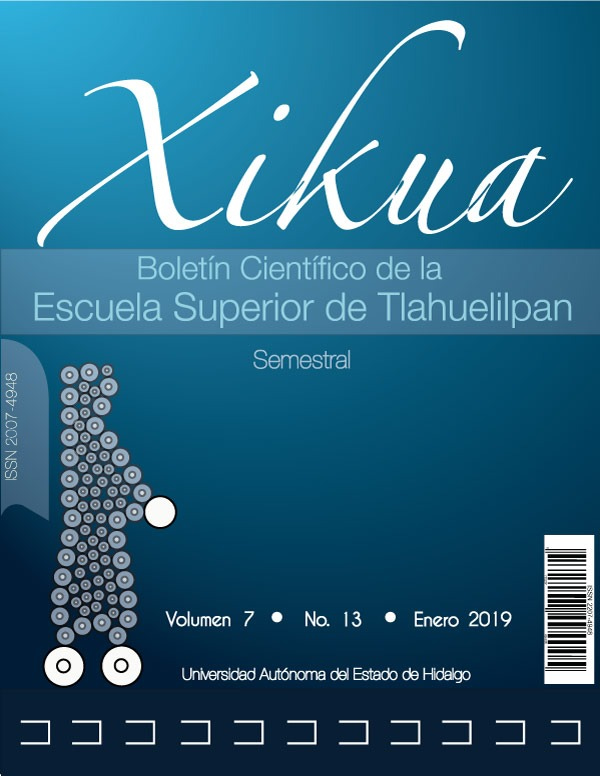Design and Construction of an Exoquisette for Rehabiitation
Keywords:
Exoskeletons, diagnosis and rehabilitation
Abstract
This article introduces the mechanical design and construction of an exoskeleton, for application in the area of medicine, specifically for the rehabilitation and diagnosis of lower extremity of children patients. In addition, it presents the anatomical planes of the human body and the orthopedic exoskeleton, as well as its anthropometric measurements. In the co-simulation the static and dynamic of the orthopedic exoskeleton is shown, where the strength to which it is subjected is described to see its maximum value, as well as the experimental tests performed on the exoskeleton mounted on a child.
Downloads
Download data is not yet available.
References
[1] S. K. Banala, S. K. Agrawal, and J. P. Scholz, “Active Leg Exoskeleton ( ALEX ) for Gait Rehabilitation of Motor-Impaired Patients”. 2007.
[2] G. S. Sawicki and D. P. Ferris, “A pneumatically powered knee-ankle-foot orthosis (KAFO) with myoelectric activation and inhibition.,” J. Neuroeng. Rehabil., vol. 6, p. 23, 2009.
[3] H. Ashrafiuon, K. Grosh, K. J. Burke, and K. Bommer, “An Intelligent Exoskeleton for Lower Limb Rehabilitation,” Vol. 2 34th Annu. Mech. Robot. Conf. Parts A B, no. January, pp. 3–9, 2010.
[4] S. Panich, “Design and Simulation of Leg-Exoskeleton Suit for Rehabilitation,” Glob. J. Med. Res., vol. 12, no. 3, 2012.
[5] R. López, H. Aguilar, S. Salazar, R. Lozano and J. Torres, "Modelado y Control de un Exoesqueleto para la Rehabilitación de Extremidad Inferior con dos grados de libertad", Revista Iberoamericana de Automática e Informática Industrial RIAI, vol. 11, no. 3, pp. 304-314, 2014.
[6] J. Beil, G. Perner, and T. Asfour, “Design and control of the lower limb exoskeleton KIT-EXO-1,” 2015 IEEE Int. Conf. Rehabil. Robot., pp. 119–124, 2015.
[7] C. Souit, D. Santana Coelho, M. Szylit, F. Camargo-Junior, M. Peres Cortez Junior, and A. Forner-Cordero, “Design of a lower limb exoskeleton for experimental research on gait control,” in Proceedings of the IEEE RAS and EMBS International Conference on Biomedical Robotics and Biomechatronics, 2016, vol. 2016–July, pp. 1098–1103.
[8] Moore, Keith L, Anne M.R.Agus, dan Arthur F. Dalley, Moore Essential Clinical Anatomy, vol. 53, no. 9. 2013.
[9] J. Pons, Wearable robots, 1st ed. Hoboken, N.J.: Wiley, 2008, pp. 105-107.
[10] C. Fleischer, “Controlling Exoskeletons with EMG signals and a Biomechanical Body Model,” p. 161, 2007.
[11] Prosthetics and orthotics -- Vocabulary -- Part 1: General terms for external limb prostheses and external orthoses, ISO Standard 8549-1:1989
[12] L. Prado-León, R. Avila-Chaurand and E. González-Muñoz, "Anthropometric study of Mexican primary school children", Applied Ergonomics, vol. 32, no. 4, pp. 339-345, 2001.
[2] G. S. Sawicki and D. P. Ferris, “A pneumatically powered knee-ankle-foot orthosis (KAFO) with myoelectric activation and inhibition.,” J. Neuroeng. Rehabil., vol. 6, p. 23, 2009.
[3] H. Ashrafiuon, K. Grosh, K. J. Burke, and K. Bommer, “An Intelligent Exoskeleton for Lower Limb Rehabilitation,” Vol. 2 34th Annu. Mech. Robot. Conf. Parts A B, no. January, pp. 3–9, 2010.
[4] S. Panich, “Design and Simulation of Leg-Exoskeleton Suit for Rehabilitation,” Glob. J. Med. Res., vol. 12, no. 3, 2012.
[5] R. López, H. Aguilar, S. Salazar, R. Lozano and J. Torres, "Modelado y Control de un Exoesqueleto para la Rehabilitación de Extremidad Inferior con dos grados de libertad", Revista Iberoamericana de Automática e Informática Industrial RIAI, vol. 11, no. 3, pp. 304-314, 2014.
[6] J. Beil, G. Perner, and T. Asfour, “Design and control of the lower limb exoskeleton KIT-EXO-1,” 2015 IEEE Int. Conf. Rehabil. Robot., pp. 119–124, 2015.
[7] C. Souit, D. Santana Coelho, M. Szylit, F. Camargo-Junior, M. Peres Cortez Junior, and A. Forner-Cordero, “Design of a lower limb exoskeleton for experimental research on gait control,” in Proceedings of the IEEE RAS and EMBS International Conference on Biomedical Robotics and Biomechatronics, 2016, vol. 2016–July, pp. 1098–1103.
[8] Moore, Keith L, Anne M.R.Agus, dan Arthur F. Dalley, Moore Essential Clinical Anatomy, vol. 53, no. 9. 2013.
[9] J. Pons, Wearable robots, 1st ed. Hoboken, N.J.: Wiley, 2008, pp. 105-107.
[10] C. Fleischer, “Controlling Exoskeletons with EMG signals and a Biomechanical Body Model,” p. 161, 2007.
[11] Prosthetics and orthotics -- Vocabulary -- Part 1: General terms for external limb prostheses and external orthoses, ISO Standard 8549-1:1989
[12] L. Prado-León, R. Avila-Chaurand and E. González-Muñoz, "Anthropometric study of Mexican primary school children", Applied Ergonomics, vol. 32, no. 4, pp. 339-345, 2001.
Published
2019-01-05
How to Cite
Gudiño-Lau, J., Rosales, I., Charre, S., Alcalá, J., Duran, M., & Vélez-Díaz, D. (2019). Design and Construction of an Exoquisette for Rehabiitation. XIKUA Boletín Científico De La Escuela Superior De Tlahuelilpan, 7(13), 1-10. https://doi.org/10.29057/xikua.v7i13.3545
Section
Article









